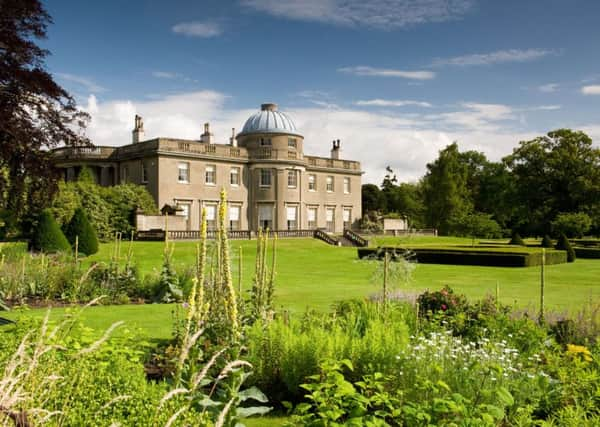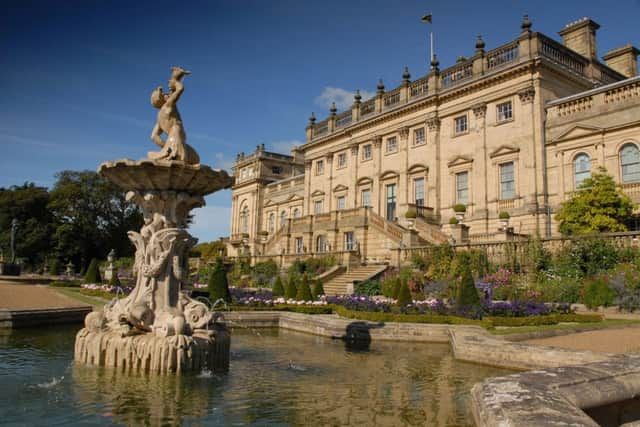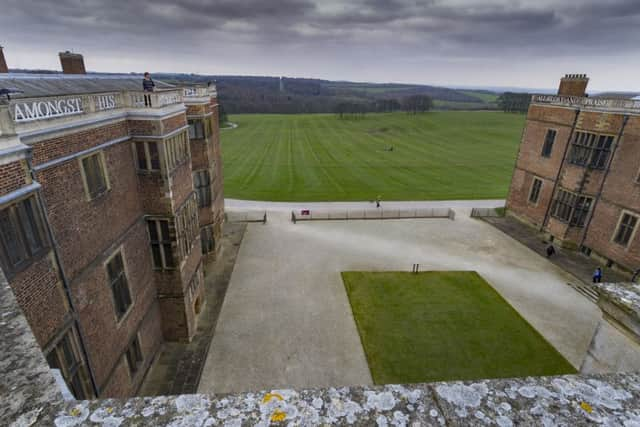Capability Brown in Yorkshire: Ace of spades


And celebrations to mark his anniversary are going to be extremely high profile – in Yorkshire and across the UK. For while Sir Christopher changed the landscape of London, Lancelot “Capability” Brown changed the landscape of the nation. Across England and Wales, he was responsible for no less than 250 projects and in Yorkshire and the Humber alone, Brown created new views and new vistas at nearly 20 properties. From Burton Constable in the east, where he worked on and off for a decade, to Scampston in the north. From Roche Abbey in the south to Harewood House in the west.
Brown was born in August, 1716, the son of William and Ursula, who lived in Kirkharle in Northumberland. One of six children, he was later to have nine children of his own, with his wife Bridget. Only five survived to adulthood.
Advertisement
Hide AdAdvertisement
Hide AdHis first commission came when he was only 18. Sir William Loraine, a local landowner, employed Brown on his estate in 1732, and he clearly used this job to hone his natural talents. Brown left in 1739, and almost immediately went one rung up the social ladder, working for Lord Cobham at Stowe.


His fame was spreading, and he soon got handed his nickname of “Capability”. It’s thought to have come from his habit of telling his prospective clients that their land had “great capabilities”.
John Phibbs, who is one of today’s experts on Brown and his works, estimates that Capability worked on “over half a million acres of land during his lifetime”. Brown, now considered the grandfather of landscape architecture, was also a skilled water engineer, including complex draining schemes into many of his designs and creating lakes that covered up 80 acres of ground.
Over the years, his clients included most of the leading lights of Debrett. Edward, the sixth Lord Digby, the ninth Earl of Exeter, the fourth Duke of Devonshire at Chatsworth, the third Duke of Bridgewater and the first Earl of Carnarvon at Highclere Castle – those grounds of the fictional Downton Abbey are actually Capability’s work.
Advertisement
Hide AdAdvertisement
Hide AdKing George III also appointed Brown his Master Gardener at Hampton Court Palace. That position gave him a “grace and favour” residence within the grounds. It was called Wilderness House, and became a place which he apparently enjoyed to the full. Sadly for Bridget, when her husband died she had to instantly vacate the property. That’s loyalty to the Crown for you.


In the days long before instant images, it was a painting or a sketch that captured what Brown achieved – and some of the best examples of a Capability landscape coming (slowly) into maturity are by JMW Turner. He visited Harewood House in 1797 and the property is currently hosting Art of the Landscape, an exhibition celebrating Brown and the artists who captured his work on canvas.
A major new exhibition will also open at the Mercer Art Gallery in Harrogate on June 25. In a collaboration between the Yorkshire Gardens Trust and the gallery, Noble Prospects: Capability Brown and the Yorkshire Landscape will be the first ever celebration of the great designer’s work and influence in the county.
Among other events in the county, Temple Newsam will be “animating the space” in the park with a new dance commission. Inside the house there is also an exhibition which runs to October. Benches have been placed at strategic points throughout the house’s 43 rooms, giving visitors a chance to enjoy the stunning views and there is also a display of Brown’s proposed alterations to Temple Newsam.
Advertisement
Hide AdAdvertisement
Hide AdRachel Conroy, curator at Temple Newsam, said: “This exhibition charts three hundred years of change and explores different ways the landscape at Temple Newsam was transformed by the vision of artistic designers like Capability Brown.


“We have some of the most beautiful views in Leeds here and that’s testament to the imagination and creativity of those who have left their mark on Temple Newsam through the ages.”
Burton Constable will play host to an artist in residence, as well as involving residents in nearby Hull, while Scampston is running a geocaching project using GPS. Oddly enough, experts are still uncertain about Brown’s hand in designing Wentworth Castle’s surroundings. There is no evidence that he was involved – but there is no evidence to the contrary either. For few records exist from Brown himself about his work.
The main aim of what he wanted to achieve, however, was something that he did commit to paper. He wrote that he strived to be “hideing [sic] what is disagreeable and shewing what it beautiful”.
Advertisement
Hide AdAdvertisement
Hide AdDr Lucy Worsley, the chief curator at Historic Royal Palaces, says: “He began his long career being despised as a ‘cabbage planter’ and ended it as an artist who adorned his country. His ambition, so he said, was to ‘finish England’, which is why he never worked north of the border, or over in Ireland, despite his getting plenty of requests to do so. He certainly made a very good job of that ‘finishing’, leaving a legacy of hundreds of parks and gardens up and down the country for us to enjoy.” She laughs: “What we are hoping to achieve is that visitors to all manner of great houses will open their eyes to what lies betwixt the car park and the mansion – the wonders created by Capability Brown”.


Ceryl Evans, director of the Landscape Institute’s national CB300 festival, adds: “Brown did not have access to motorised machinery and other technology, and work had to be done by hand. Yet Capability transformed the landscape, using trees, meadows and water features on an extraordinary scale, bringing them all together to create designs that became quintessentially English. These designs still live on today and our festival offers a myriad of different ways to enjoy and experience these beautiful historic landscapes. There’s everything – from horse and carriage rides to art exhibitions, to cycling trails, talks and even Capabili-Teas, where visitors can enjoy some of the food and drink that Brown would have known himself.”
The festival is funded by a £911,100 grant from the Heritage Lottery Fund, and backed by scores of collaborative partners. The money was handed over after the assurance that there would be active audience development projects, to trial new and innovative ways to get different kinds of visitors into heritage sites. This will all leave a legacy that should reach well beyond 2016.
“His own legacy is 250 ‘special gifts’,” says Dr Worsley. “Did he have a favourite place? I think, being the canny man that he was, that there is a strong possibility that he told all his clients that theirs was his particular favourite, and theirs alone.”
Advertisement
Hide AdAdvertisement
Hide AdNationally the main celebrations will be focused on Fenstanton, which happened to be the only property that Lancelot ever owned outright. He was given the parish in 1767 as part payment for work he undertook for the Earl of Northampton’s estate at Castle Abbey. And it would appear that he had great plans in hand to change the appearance of his territory into parkland.
Based on his plans, Brown intended to retire to Fenstanton once he had finished “changing the landscapes of England” and to live a life as the lord of his own manor. So respected was he that he was also the High Sheriff of Huntingdon in his later life. From working for the nobility, he was to become landed gentry himself. Unfortunately, before his plans were realised, he died while crossing the street in London on his way home to supper, and he was buried in the quiet earth of Fenstanton.
• For further information go to capabilitybrown.org, [email protected]. Yorkshire Capabilities, The Yorkshire Landscapes of Capability Brown, www.newarcdianpress.co.uk , £25.